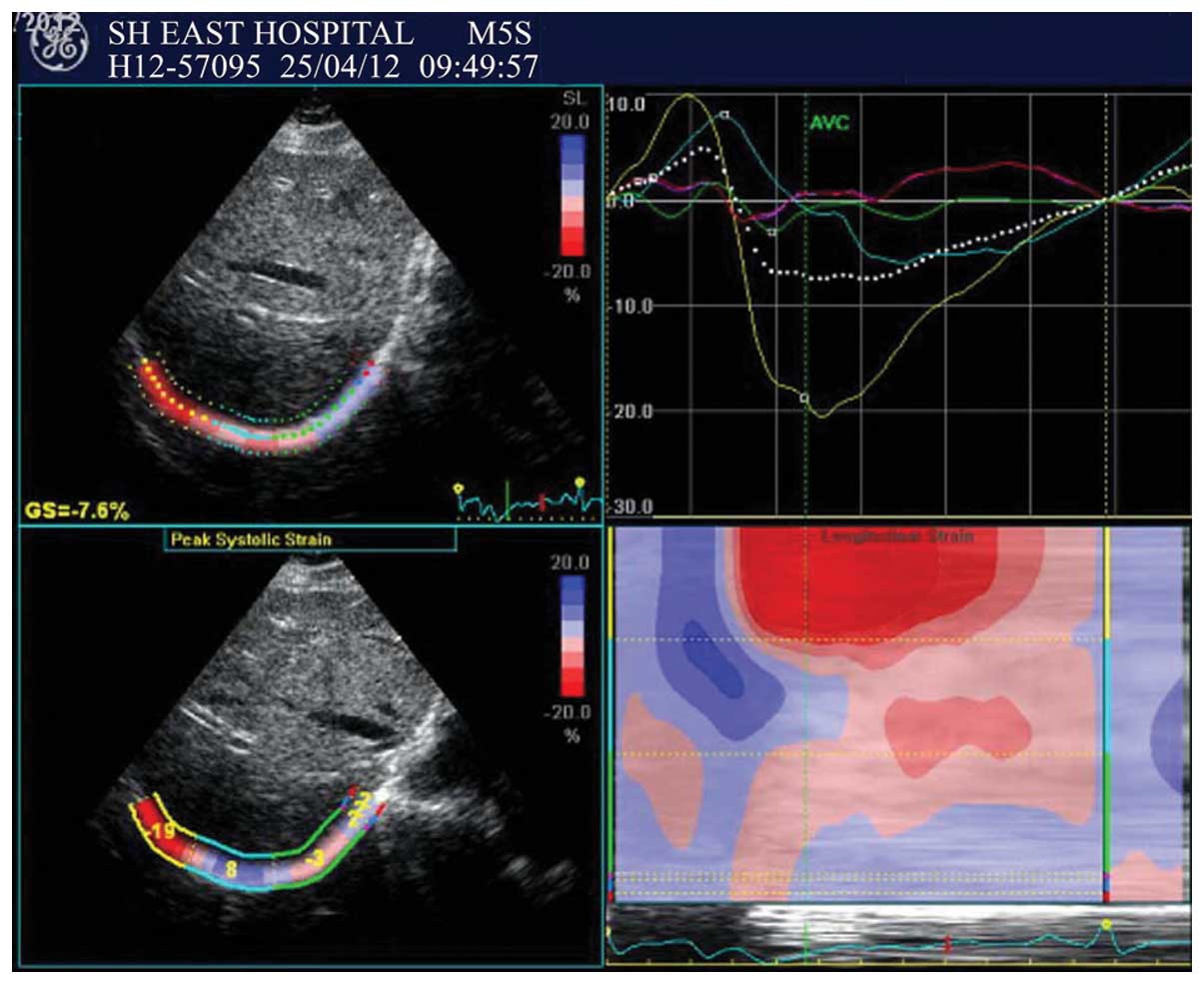|
1.
|
Downey R: Anatomy of the normal diaphragm.
Thorac Surg Clin. 21:273–279. 2011. View Article : Google Scholar
|
|
2.
|
Poole DC, Sexton WL, Farkas GA, Powers SK
and Reid MB: Diaphragm structure and function in health and
disease. Med Sci Sports Exerc. 29:738–754. 1997. View Article : Google Scholar : PubMed/NCBI
|
|
3.
|
Maish MS: The diaphragm. Surg Clin North
Am. 90:955–968. 2010. View Article : Google Scholar
|
|
4.
|
Kamata S, Usui N, Sawai T, Nose K,
Kamiyama M and Fukuzawa M: Radiographic changes in the diaphragm
after repair of congenital diaphragmatic hernia. J Pediatr Surg.
43:2156–2160. 2008. View Article : Google Scholar : PubMed/NCBI
|
|
5.
|
Plathow C, Fink C, Ley S, et al:
Measurement of diaphragmatic length during the breathing cycle by
dynamic MRI: comparison between healthy adults and patients with an
intrathoracic tumor. Eur Radiol. 14:1392–1399. 2004. View Article : Google Scholar
|
|
6.
|
Chen M and Siochi RA: Diaphragm motion
quantification in megavoltage cone-beam CT projection images. Med
Phys. 37:2312–2320. 2010. View Article : Google Scholar : PubMed/NCBI
|
|
7.
|
Gethin-Jones TL, Noble VE and Morse CR:
Quantification of diaphragm function using ultrasound: evaluation
of a novel technique. Ultrasound Med Biol. 36:1965–1969. 2010.
View Article : Google Scholar : PubMed/NCBI
|
|
8.
|
Gerscovich EO, Cronan M, McGahan JP, Jain
K, Jones CD and McDonald C: Ultrasonographic evaluation of
diaphragmatic motion. J Ultrasound Med. 20:597–604. 2001.PubMed/NCBI
|
|
9.
|
Testa A, Soldati G, Giannuzzi R, Berardi
S, Portale G and Gentiloni Silveri N: Ultrasound M-mode assessment
of diaphragmatic kinetics by anterior transverse scanning in
healthy subjects. Ultrasound Med Biol. 37:44–52. 2011. View Article : Google Scholar : PubMed/NCBI
|
|
10.
|
Ayoub J, Cohendy R, Dauzat M, et al:
Non-invasive quantification of diaphragm kinetics using m-mode
sonography. Can J Anaesth. 44:739–744. 1997. View Article : Google Scholar : PubMed/NCBI
|
|
11.
|
Houston JG, Angus RM, Cowan MD, McMillan
NC and Thomson NC: Ultrasound assessment of normal
hemidiaphragmatic movement: relation to inspiratory volume. Thorax.
49:500–503. 1994.PubMed/NCBI
|
|
12.
|
Gilman G, Khandheria BK, Hagen ME, Abraham
TP, Seward JB and Belohlavek M: Strain rate and strain: a
step-by-step approach to image and data acquisition. J Am Soc
Echocardiogr. 17:1011–1020. 2004. View Article : Google Scholar : PubMed/NCBI
|
|
13.
|
Dandel M, Lehmkuhl H, Knosalla C,
Suramelashvili N and Hetzer R: Strain and strain rate imaging by
echocardiography - basic concepts and clinical applicability. Curr
Cardiol Rev. 5:133–148. 2009. View Article : Google Scholar : PubMed/NCBI
|
|
14.
|
Nason LK, Walker CM, McNeeley MF, Burivong
W, Fligner CL and Godwin JD: Imaging of the diaphragm: anatomy and
function. Radiographics. 32:E51–E70. 2012. View Article : Google Scholar : PubMed/NCBI
|
|
15.
|
Cohen E, Mier A, Heywood P, Murphy K,
Boultbee J and Guz A: Diaphragmatic movement in hemiplegic patients
measured by ultrasonography. Thorax. 49:890–895. 1994. View Article : Google Scholar : PubMed/NCBI
|
|
16.
|
Kleinman BS, Frey K, VanDrunen M, et al:
Motion of the diaphragm in patients with chronic obstructive
pulmonary disease while spontaneously breathing versus during
positive pressure breathing after anesthesia and neuromuscular
blockade. Anesthesiology. 97:298–305. 2002. View Article : Google Scholar
|
|
17.
|
Boussuges A, Gole Y and Blanc P:
Diaphragmatic motion studied by m-mode ultrasonography: methods,
reproducibility, and normal values. Chest. 135:391–400. 2009.
View Article : Google Scholar : PubMed/NCBI
|
|
18.
|
Perk G, Tunick PA and Kronzon I:
Non-Doppler two-dimensional strain imaging by echocardiography -
from technical considerations to clinical applications. J Am Soc
Echocardiogr. 20:234–243. 2007. View Article : Google Scholar : PubMed/NCBI
|
|
19.
|
Boriek AM, Wilson TA and Rodarte JR:
Displacements and strains in the costal diaphragm of the dog. J
Appl Physiol. 76:223–229. 1994.PubMed/NCBI
|
|
20.
|
Suzuki M, Suzuki S, Akahori T, et al:
Patterns of inspiratory muscle shortening during hypoxia and
hypercapnia in dogs. Eur Respir J. 10:430–436. 1997. View Article : Google Scholar : PubMed/NCBI
|















